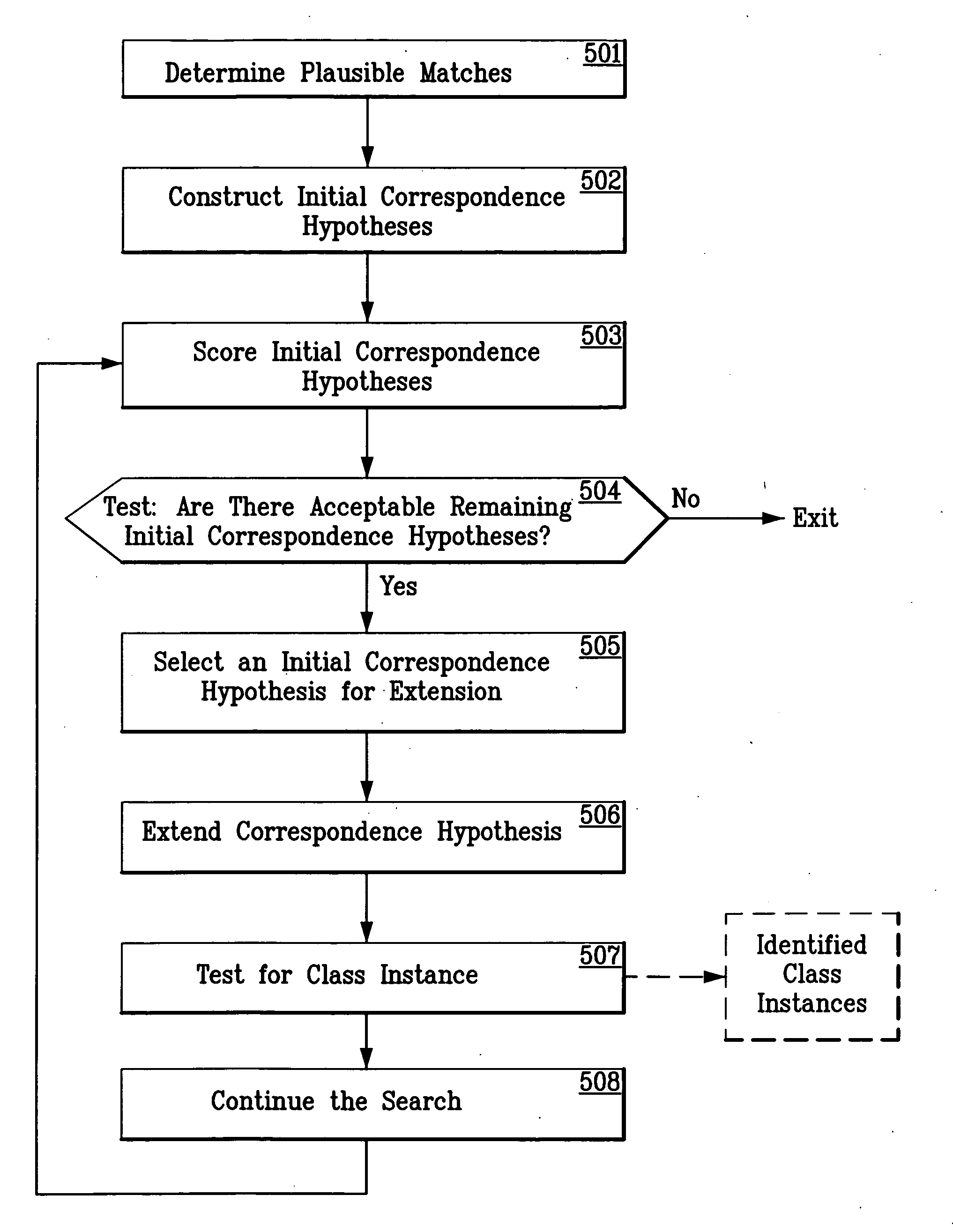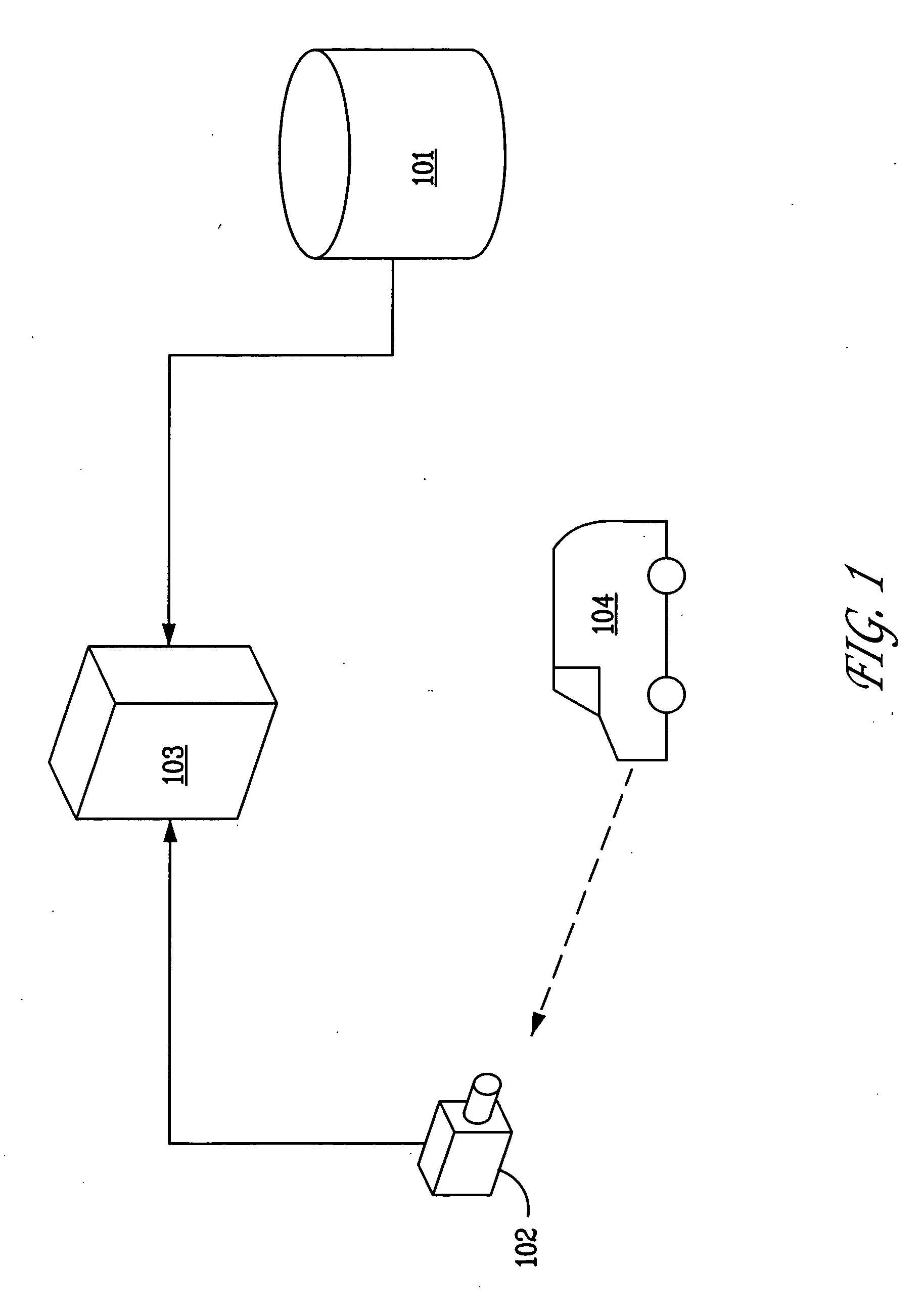System and method for recognition in 2D images using 3D class models
a class model and class recognition technology, applied in the field of computer vision, can solve the problems of recognizing a specific object, presenting many problems in class recognition, and presenting additional problems related to class recognition
- Summary
- Abstract
- Description
- Claims
- Application Information
AI Technical Summary
Problems solved by technology
Method used
Image
Examples
first embodiment
[0113] The first embodiment is described as follows: (1) database construction; and (2) recognition in an image.
Database Construction in the First Embodiment
[0114] A class database consists of a set of class models. FIG. 3 shows the major steps of constructing a class model. In Step 301, 3D images of sample objects belonging to the class are acquired. In Step 302, an object model is constructed for each sample object. In Step 303, the object models are placed in canonical geometric form. In Step 304, the object models in canonical geometric form are merged to form a class model.
Acquiring 3D Images
[0115] Several 3D images of a sample object, as viewed from multiple viewpoints, are obtained under controlled conditions. It is sometimes convenient to refer to these as “views” of an object. The scene contains a single foreground object on a horizontal planar surface at a known height. The background is a simple collection of planar surfaces of known pose with uniform color and text...
second embodiment
[0178] The present invention can be also used for object recognition. Indeed, the present invention can be used for mixed object recognition and class recognition. However, for the purpose of exposition, it is convenient to describe object recognition, with the explicit understanding that the mixed case can also be carried out.
[0179] In the present invention, object recognition is very similar to class recognition. Hence, it is expedient to discuss only the major issues.
Database Construction in the Second Embodiment
[0180] For object recognition, a 3D database model is of one particular object. Many objects are deformable with multiple geometric states, or have multiple appearance states, or have multiple ancillary states. For example, the face of a particular person undergoes deformation as the person's expression changes, the appearance changes if he grows or shaves a beard, and the appearance further changes with the presence or absence of eyeglasses.
[0181] The first step in ...
PUM
 Login to View More
Login to View More Abstract
Description
Claims
Application Information
 Login to View More
Login to View More - R&D
- Intellectual Property
- Life Sciences
- Materials
- Tech Scout
- Unparalleled Data Quality
- Higher Quality Content
- 60% Fewer Hallucinations
Browse by: Latest US Patents, China's latest patents, Technical Efficacy Thesaurus, Application Domain, Technology Topic, Popular Technical Reports.
© 2025 PatSnap. All rights reserved.Legal|Privacy policy|Modern Slavery Act Transparency Statement|Sitemap|About US| Contact US: help@patsnap.com



